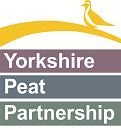In the policy space, we talk about carbon sequestration, flood mitigation, water filtration, other words ending in -ation. I understand the reasons we do that – if you’re talking to HM Treasury, joy isn’t going to illicit much funding. But we diminish these amazing places when we frame them solely in the context of the benefits they afford us.
Bogs deserve better
Cranberries © Tessa Levens
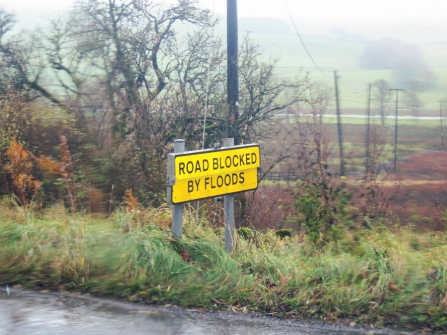
Flooded road © Tessa Levens
From a literary perspective, much of the language leans into brooding and wuthering and dark and wet. Again, I understand this and, to a degree, I’m here for it. That moment where you’re stood under a pewter sky in that weird purple light – somehow bright and dark at once – just waiting for the Deluge to come in horizontally? The warm wind has a chill at the back of it and it’s crackling with the tension of impending release. It’s thrilling, but it’s all a bit Baskervilles, isn’t it, a bit Cathy and Heathcliff, a bit gothic…
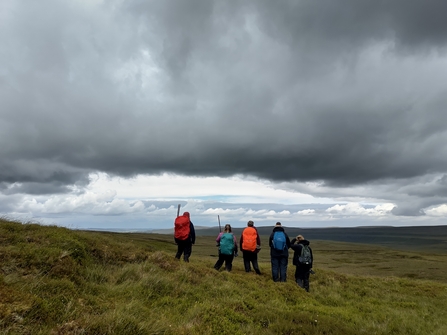
Under a pewter sky © Beth Thomas
Compare these perspectives with the opening paragraph of Neill M. Gunn’s extraordinary short story The Moor:
A few miles back it had looked like a sea-anemone on a vast tidal ledge, but now, at hand, it rose out of the moor’s breast like a monstrous nipple. The scarred rock, heather tufted, threw a shadow to his aching feet, and because he was young enough to love enchantment in words, he savoured slowly, “like the shadow of a great rock in a weary land.” With a nameless shudder of longing he passed his tongue between his sticky lips. The Sutherland moor under the August sun was silent as a desert.
Without giving away any spoilers, the story frames peatlands as liminal places, thresholds between realms. Rather than a shopping list of Government outcomes or a brooding panorama, this starts wide and then focuses in to find intimacy. Our protagonist is metal between the anvil of the bog and the sun’s hammer, he is changed by his experience; this is a narrative in which peat is transformative.

Laxford Mire © Tim Allot
And peat is transformative, in and of itself, and for those that spend time with it. Our ACE Bogs project took people from communities in Wharfedale, Airedale, Bradford and involved them in peatland restoration on Denton Reserve, on the southern fringe of Nidderdale. Working with visual artist, Naseem Darbey, poet and musician, Sarah Smout, and photographer, Juliet Klottrup, ACE Bogs led participants to new ways of expressing peatlands and, if their self-expression is anything to go by, new ways of thinking about peatlands. Through a series of artist-led workshops, the project created drawings from 70 participants; poetry and prose from 30 participants; a series of photographic portraits; music; film.
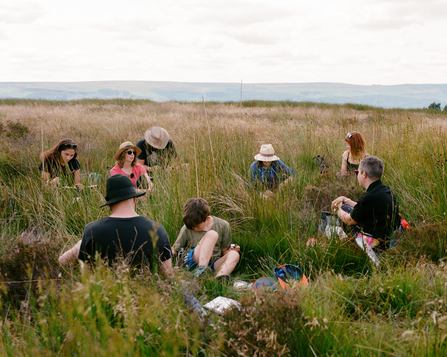
ACE Bogs art workshop © Juliet Klottrup
The key to changing your mind about peatlands is to zoom right in, find the joy in the minutiae, and then hold onto that as you zoom back out. See Naseem’s amazing drawings of Sphagnum to get an idea of what I mean. As you zoom out again and pan, remember that this vast, sweeping landscape is made up of those tiny details you found; you have transformed and been transformed by peatlands.
ZOOM IN
zoom out
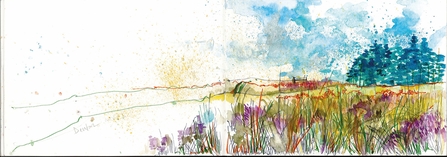
Naseem’s ACE Bogs sketchbook July 2023 to February 2025 © Naseem Darbey
You could achieve a similar outcome with sound. Sit on peatland in the sun (suitably protected from insects and UV) and close your eyes. The sunlight is a gentle pressure on your eyelids; somewhere away across the moor, the rippling call of a curlew bubbles across the bog; nearby, a strange, almost metallic rattle circles a pool – don’t peek – possibly a dragonfly; if you are still for long enough, there is a rustling in the moss – a field vole, common lizard, common frog; overhead a skylark rises, its song a liquid trilling, before parachuting back to earth like a musical shuttlecock; a gentle breeze soughs through the bobbing heads of the cottongrass. When you (slowly) open your eyes, the landscape feels more full of sound, of beauty, of joy, of glory because you have listened to its song. If you can keep hold of that feeling when the weather is foul then you are one of us.
Spring bird call on peatlands
Listen out for skylark, curlew and golden plover
Sunday 27th July is Bog Day and we owe it to these places (and to ourselves) to be moved by them, to transform the way we talk and think about them and, in so doing, to recognise and enjoy them for the joyous, glorious and liminal places they are. Even when it’s raining. Again.
